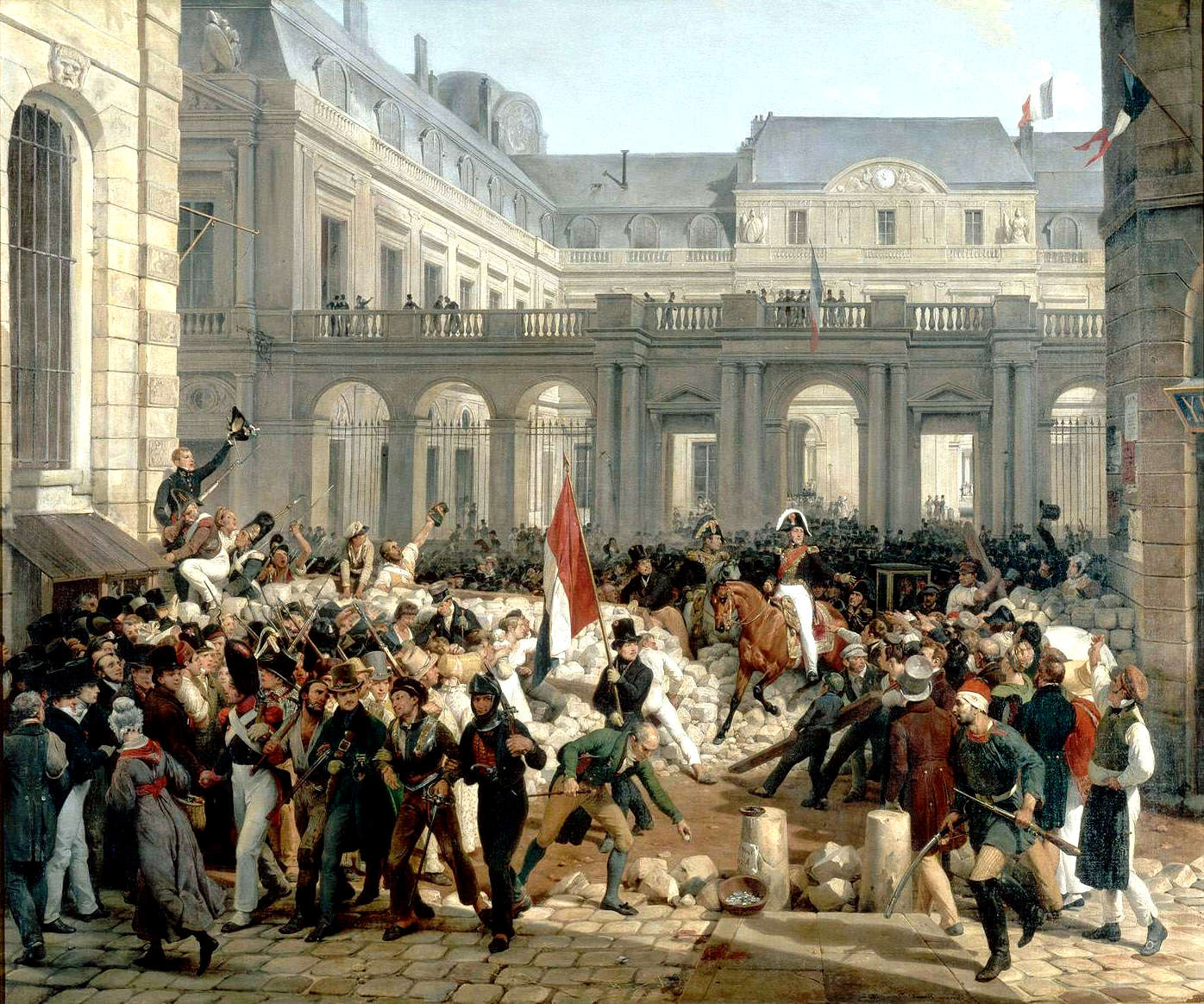Louis-Philippe & the Fall of the July Monarchy, 1848
 Friday, June 18, 2010 at 9:26AM Tweet
Friday, June 18, 2010 at 9:26AM Tweet 
Following the three glorious days of July 1830, Les Trois Glorieuses, and the abdication of the throne by King Charles X, French rule shifted from the Bourbon to the Orleans' branch of the royal family. The Orleans had lusted for the power of the throne for a very long time, but their turn would last only until the next revolution…
The revolution of 1830 gave France a “citizen king”, Louis-Philippe, who received the throne by the will of the people, rather than by “divine right”; who walked the streets of Paris with an umbrella under his arm, rather than a royal scepter; and who took the throne as King of the French, rather than King of France like his Bourbon cousins, swearing to uphold and defend the laws of a constitution.
 It was Louis-Philippe's wish to lift France into the 19th century as quickly as possible by bringing the Industrial Revolution to his side of the English Channel. But he perhaps moved too quickly. Wealth exploded amongst the captains of industry while peasants and workers starved. Unemployment outpaced job creation. Those who did find work earned a mere pittance for a day of grueling labor.
It was Louis-Philippe's wish to lift France into the 19th century as quickly as possible by bringing the Industrial Revolution to his side of the English Channel. But he perhaps moved too quickly. Wealth exploded amongst the captains of industry while peasants and workers starved. Unemployment outpaced job creation. Those who did find work earned a mere pittance for a day of grueling labor.
Rioters protested the injustice, shouting that the July Monarchy of Louis-Philippe stood not for them, but for the bourgeois shopkeepers, bankers, industrialists, and merchants. They used their wooden sabots to jam the nation’s machines (origin of the word sabotage).
The king answered with troops, again and again, as his regime grew more and more despotic. Barricades were raised only to be razed by the king’s army as insurrection after insurrection swept the country. Corruption ruled the day.
In 1846 a failed potato harvest plunged France into financial crisis. By 1847 one-third of Paris’ population was out of work and starving. The middle class had grown wholly disenchanted with a government that privileged only the wealthy. Even the bourgeoisie began to see through the king’s naked ambition to increase only his power and the wealth of his family. Political gatherings become commonplace. The National Guard began to fraternize with the people.
 23 February 1848: the people revolt. Republicans and Orleanists, workers and students, all stand side-by-side as they turn on Louis-Philippe. They erect barricades of overturned omnibuses, bits of metal, paving stones, furniture, and thousands and thousands of felled trees. Fires are set. Angry citizens converge on the royal palace. Louis-Philippe abdicates; he flees to England
23 February 1848: the people revolt. Republicans and Orleanists, workers and students, all stand side-by-side as they turn on Louis-Philippe. They erect barricades of overturned omnibuses, bits of metal, paving stones, furniture, and thousands and thousands of felled trees. Fires are set. Angry citizens converge on the royal palace. Louis-Philippe abdicates; he flees to England
Marx calls it the “Beautiful Revolution” as there are no apparent divisions among the classes. The people are united in their hatred for Louis-Philippe’s government…
Horace Vernet, 1832, Louis-Philippe, Duke of Orleans, leaving the Palais Royal for the Hôtel de Ville, 31 July 1830 (1832). Musée national du Château de Versailles.
Franz Xaver Winterhalter, 1841, Louis-Philippe, King of the French from 1830 to 1848 (July Monarchy).
Horace Vernet, 19th century, Battle at rue Soufflot barricades, 24 June 1848.






Reader Comments